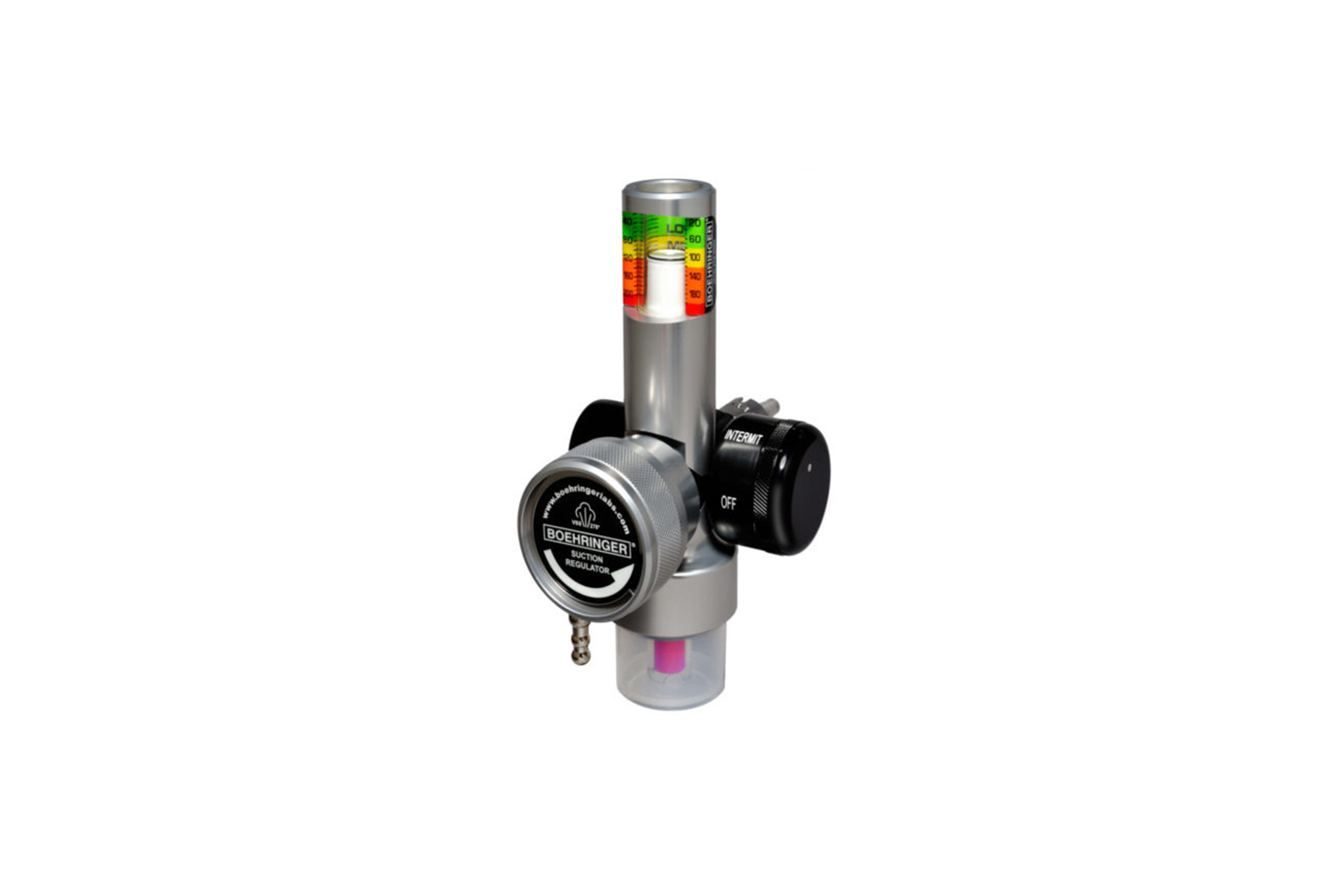Every suction collection circuit needs to use a suction canister to prevent fluids from entering the regulator and central suction system. These canisters will employ a shutoff mechanism to avoid overflow. Either by human error or manufacturing defects, the shutoff mechanisms can fail and lead to flooding of the suction regulator and central suction system.
The National Fire Protection Association details the standard for all medical gas piping in hospitals through NFPA99: Health Care Facilities Code. There is a requirement for a collection canister, but there is no requirement for a trap bottle on your suction regulator. Some of our competitors mention that NFPA99 requires a trap bottle on your regulator; this is not the case. Please ask them where this section is in NFPA99 if they need you to buy a trap bottle with their suction regulator.
A trap bottle prevents gross fluid infiltration into the regulator. They work by having a ‘float’ that rises based on the fluid level in the trap bottle. A trap bottle is not a bacterial barrier. Overspray from incoming liquids can aerosolize and enter the suction system. Like the ones made by Boehringer, even fast-acting trap bottles still allow a few milliliters of fluid to enter the regulator. Since trap bottles are not a bacterial barrier, the notion that they are needed to prevent contamination from entering your central suction system is likewise an urban myth.
NFPA99 does reasonably envision that your suction system is thoroughly contaminated; thus, the exhaust from your central suction pumps must exit at least 25’ from any air entrance in your hospital. You are also required to cap suction inlets should the suction system be turned off; both of these circumstances point out that you do not want biological contamination from the central suction system to get into the patient care areas.
The leading cause of suction regulator failure is fluid infiltration, resulting in costly repairs to digital or analog gauges or intermitting timing mechanisms. Flooding can also seize the internal regulation mechanism turning your suction regulator into a simple ON/OFF device with no ability to regulate suction.
The base design of the Boehringer regulator makes them tolerant of fluid intrusion. A patented Air Curtain™ protects the precision regulation components to ensure that even after a liquid intrusion, it can regulate suction. The patented Linear Gauge is self-draining and even able to be submerged without affecting its accuracy. Finally, the patented magnetic timing module is tolerant of fluid intrusion and easily cleaned by a simple equipment wipe if it becomes clogged, rather than resulting in a $200 service event. A 90-second video shows you the bedside service that may be needed (https://youtu.be/RoFOx099c84).
A trap bottle mounted to a regulator does serve as a visual indicator of unit flooding; thus, limiting any service needed to the regulator. However, your institution needs to have a procedure in place to handle contaminated trap bottles. Typically, environmental services will not handle medical equipment, and biomedical engineering will not take contaminated equipment. Therefore, nursing is left to bear the brunt of this process. When no process exists but trap bottles are specified, you typically find grossly contaminated trap bottles in patient care areas.
In hospitals where there is an effective process to handle trap bottles, there is coordination between Nursing, Sterile Processing, and Biomedical Engineering. Such a process typically has nursing delivering contaminated units to a soiled utility room. Sterile Processing will clean, disinfect and sterilize the units. Biomedical engineering will perform a simple function test on the units. Such a system ensures patients receive suction regulators not grossly contaminated with fluid.
A trap bottle can serve to limit the service events on your suction regulators. Trap bottles can also improve the process of how you handle contaminated units to ensure the best care for your patients. On the downside, they may also create added work for your staff. There is no regulatory requirement to have a trap bottle on your regulator, so you should balance your need for them against the results you wish to obtain.
Back to Blog


